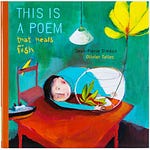Why are some writers more interesting to read than others?
Why is one piece of writing easy to understand and another on the same subject difficult?
The most important thing about any kind of writing is often forgotten.
It must be enjoyable.
It must be interesting.
If it's not, it's forgotten.
The reader will simply shut it out of his or her mind and walk away.
However, if a writer makes for interesting reading, then, the reader will make a concerted effort to understand.
So if the writer, manages to stir the imagination, and arouse emotions, then the reader will remember that piece of writing forever.
Yet we continue to read boring, trite, brittle pieces of writing from different kinds of writers on similar topics. They are absolutely uninspiring.
Not every writer is worth his salt!
But, remember, some writers do rouse you to action.
In my previous post, I wrote about ToM, and the importance of knowing what is called “mental state language.” Building linguistic competence to understand “false belief tasks” become extremely crucial for the development of a syntax that builds strong ToM in young children. In very simple terms, does your child understand the meaning of words about the mind, like "think," or "believe" or "know"?
In neurotypical children this ability develops between the ages 3 and 5. The understanding of ToM becomes particularly important for children who are autistic or have hearing impairments.
The best place to see language come alive is in good children’s literature. Children’s books cleverly place a multitude of factors at the forefront of learning including language acquisition, humour, emotional intelligence and a host of other related elements.
If you would like to learn more about ToM, please visit the nature website. Here is a list of narrative fiction that promotes ToM.
Rosie’s Walk by Pat Hutchins
In Rosie’s Walk, the story of the perpetually evil, hen-hunting fox, who is on a mission to find devious ways to devour the hen, is thwarted by angry bees. Interspersed with humour and plot twists, the book works well for children with limited attention spans.

Goodnight Gorilla by Peggy Rathmann
In this story, a lion, a gorilla, a giraffe and other zoo animals follow a zookeeper who is making his nightly rounds saying goodnight to his zoo friends. What the zookeeper does not know is that the gorilla now has the keys and is opening the cage doors of all the animals. In the end, as the zookeeper makes his way home, all the animals follow him to his bed.

A Hat for Minerva Louise (Minerva Series)
In all of Minerva Louise’s stories, the funny chicken finds no satisfaction because she cannot understand the human world. Written very simply and illustrated with brilliance, these stories are bound to make even the most reluctant reader pay attention.

Good News Bad News by Jeff Mack
The perfect book to balance the good and bad perspectives about life. The rabbit, forever an optimist only sees the bright side while the rat, forever a pessimist cannot help but see only the negatives. In the end, the rat’s perspective rubs off on the rabbit, and the rabbit begins to cry. The rat, realising he’s turned his friend into a sad person, decides to turn his perspective around, and just as he does, the sun begins to shine.

You Are (NOT) Small by Anna Kang and Christopher Weyant (Illustrator)
A brilliant story about point of view. It is cute. It is funny and the best of all, it helps children understand that there is always a point of view that is different when viewed from the other side.

If you have young children in your families or if you are an educator, get down to understanding ToM and learn more about books that promote this essential skill. Until the next post, keep reading.









Share this post